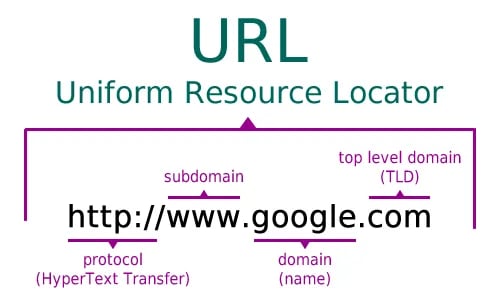How Do I Make My Website Show Up on the Internet?

Have you ever wondered what all is needed in order to have a website appear "live" on the Internet so that anyone in the world with Internet access can see it? If so, then keep reading because we are going to tell you exactly what you want to know, and everything you need to know to answer “how do I make my website show up on the internet?” There are actually several components that all need to come together in the correct way to make it work. Multiple elements each play an important role in the recipe for website success, and you really can’t ignore any of them.
It’s not enough to just build a website, you also have to do all the things that make it visible so that people can find you when they’re searching for the products and services — the solutions — you offer, if you're a business, or the information or content you offer, if you're not a business. Here are the things you need to make a website appear online:
- A Domain Name with correctly configured DNS settings
- A Hosting Service or Website Server that is connected to the Internet
- HTML Code
- Images (optional)
- The Internet
Perhaps the most critical things in making your website show up on the internet are your domain name, your hosting provider, the code powering your website, and the graphics you’ve used.
Let’s look at each of these in more detail …
Domain Name
Back in the early days of the Internet, people used to call these "dot-coms". A domain name is what identifies your website on the internet in an easy-to-use, easy-to-remember manner instead of using the site’s official public IP (Internet Protocol) address. Think of it like your street address vs. your property parcel number.
For example, "google.com" is the domain name for Google’s website. It’s much easier to remember than the IP address 216.58.223.255, which also takes you to Google’s website but is not very memorable.
A domain name has three parts:
- A "second level domain" such as "google"
- A "top level domain" (TLD) such as "com", "net", "org", etc.
- A "dot" or period which goes in between the TLD and the second
A fourth part, the subdomain, is optionally available. All of these are important components of the URL structure.

A strategic domain name makes your website part of your brand identity, establishes your credibility and authority, makes you memorable, and helps you stand out from your competitors.
You obtain a domain name through a domain registrar like Google Domains or Go Daddy (we do not recommend Go Daddy), where you can check whether or not your domain is available, and if it is, you can purchase the name.
After that, you associate the domain name with your hosting provider to make your website accessible. This is done by configuring your DNS settings. DNS stands for "Domain Name System". The purpose of DNS is to tell every computer on the Internet where the website for each domain name lives.
DNS acts like a bridge that connects the domain name with the IP Address. The DNS records for Google.com, for example, contain the IP address, 216.58.223.255.
Think of DNS like a helpful guide, if someone tries to go to Google.com, the DNS says, "right this way please" and directs them to the IP address where the Google.com website lives. The place a website lives is called a web host, or a web server, which we'll cover next.
Hosting (Web Server)
Hosting refers to the internet-connected computer, called a "server", that stores your website’s files and data so that it can be accessed over the internet. A server is similar to your desktop computer, but it is configured with specialized software and hardware. Any computer can be a server, but it's important for servers to be properly built, otherwise the website will be slow and potentially vulnerable to attacks such as hackers and malware.
It would be difficult and expensive to build a server on your own, tune it for high performance, and make it safe and secure. And once you build a server, they require constant power, maintenance, and mitigation of security vulnerabilities, which is why most people leave it to the pros and use a web hosting service — a hosting provider — to handle it for them. You essentially rent space on their servers that the hosting provider configures, maintains, and runs.
There are many different types of hosting, but for general purposes, there are three most common types:
- Shared Hosting servers (most common)
- Dedicated servers (costs more)
- Cloud-based (powerful and easily scalable).
Shared Hosting servers have hundreds or thousands of websites which all share a single web server. Dedicated servers host websites for only one customer. Cloud-Based hosting is typically used by the largest, enterprise-level websites and apps such as Google, Facebook, and TikTok.
HTML Code
Code is what makes your website look and function like it does. It’s the programming that runs your website.
Website code consists of a language called "HTML" (HyperText Markup Language). It can also, optionally, use CSS (Cascading Style Sheets), and scripting languages (of which there are thousands) such as javascript and PHP.
But the average website owner does not need to know how to code. Most are content to leave it in the capable hands of a web developer to handle for them. New tools are constantly being developed to help people build entire websites that are beautiful and elegant, without the need to write a single line of code.
Images (Optional)
Optionally, graphical elements such as images or illustrations make your website more visually interesting. There are plenty of websites, especially from the early days that don't use any images at all, but they look terrible compared to the standard websites of today.
Like with coding, most website owners contract with a professional — a web designer — to handle the graphics of their website.
The Internet
We promised that we would tell you everything you need, and so this list wouldn't be complete with the final, yet arguably, the most important piece: The Internet itself. The Internet is a global computer network with several important functions. One of those functions is called The Worldwide Web or WWW. The Internet is a ubiquitous and essential part of our modern lives, one which we most likely take for granted. But it's important to consider, at least once in your life, that the Internet was slowly developed over decades to become what it is today.
A Strategic Blend of Art and Science
Websites are a strategic blend of art and science — of graphics and code — that live in a hosted space accessed by a specific domain name. But that is just the beginning. Websites are so much more than this. Websites have revolutionized almost every industry on the planet, and continue to evolve (as apps), changing our lives and shaping our world.
Publishing a website so that it shows up on the internet requires putting all of these elements together in just the right way. But most people don’t need nor want to know all the ins and outs of what makes a website work … they simply want a marketing tool that gets results.
Maybe you are feeling ambitious and would like to try to build one yourself. Or maybe it's all too overwhelming, and you need a website to help your business grow. That’s where we come in.
WorldLight Media has specialized in web design and helped companies produce outstanding websites since 2005. We’d love to help you, too.
We invite you to contact us today to start the conversation.







